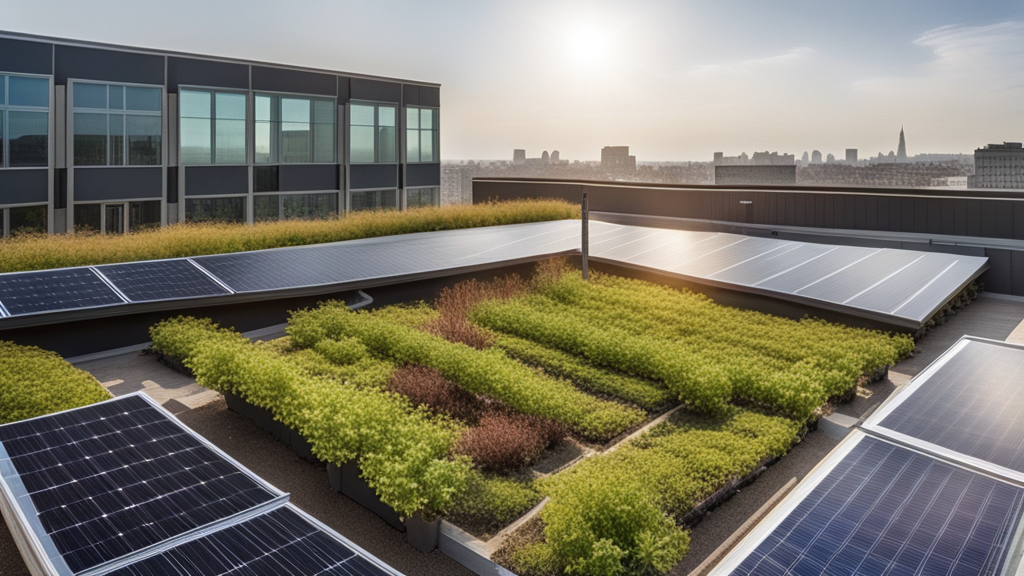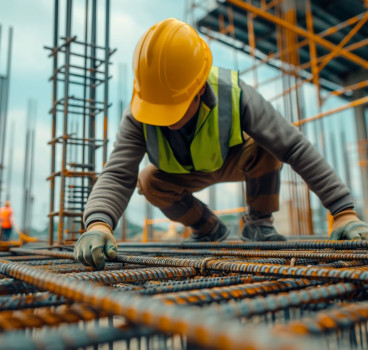Green construction – set for massive year on year growth
The global construction industry is undergoing a significant transformation, driven by a growing awareness of the environmental impact of buildings and a collective push towards sustainability. This transformation centres around the concept of green building, a holistic approach to constructing and operating structures with minimal environmental impact – and it’s a market set for massive growth over the next four years – writes John Ridgeway.
According to The Business Research Company's Green Building Global Market Report 2024, this sector will reach an estimated value of $851.01 billion by 2028 with a huge compound annual growth rate (CAGR) of 9.7%. This upward trend reflects a rising global interest in sustainable building practices, with North America currently leading the market share.
Green building is now well established within the construction industry, a comprehensive philosophy that encompasses the entire lifecycle of a building, from conception and design to construction, operation and eventual demolition or renovation.
This is being delivered by a number of different factors such as reduced energy consumption, achieved through more energy-efficient appliances, improved building envelope insulation and the use of renewable sources like solar panels.
Water-saving fixtures, rainwater harvesting systems and drought-resistant landscaping are also being increasingly being used. We are seeing the prioritisation of recycled, renewable and locally sourced materials to minimise environmental impact and transportation emissions. Green building practices are also aiming to minimise construction waste through more efficient planning and by focusing on reusable or recyclable materials.
Green building sectors
The green building market is changing in three distinct areas – better products, better applications and better end uses. Green products include energy-efficient windows, sustainable roofing materials like green roofs and sustainable cladding options.
We are seeing more energy-efficient lighting fixtures, recycled content carpets and low-emitting volatile organic compound (VOC) paints and finishes. Green building systems now feature energy-efficient heating, ventilation, and air conditioning (HVAC) systems, smart building controls and water-saving plumbing fixtures.
Solar panels, photovoltaic cells and other solar energy technologies are also rapidly growing segments within the green building market, together with a variety of innovative and specialised products like green cleaning solutions, sustainable insulation and bio composite building materials.

Green roofs, cool roofs and reflective roofing materials are all contributing to energy efficiency and reduced heat island effect in urban areas. Sustainable flooring options like cork, bamboo and recycled content tiles are also gaining popularity in green building projects. High-performance insulation made from recycled content or natural fibres are minimising energy loss and improving the thermal performance of buildings.
Building a more inclusive green construction industry
While the green building market is experiencing significant growth, it's becoming increasingly clear that innovation in materials and technologies needs to address affordability concerns to make green building accessible for a wider range of projects.
Successful green building projects often involve collaboration with local communities. Engaging with residents and stakeholders throughout the design and construction process fosters a sense of ownership and ensures the project aligns with community needs.
However, if the green building industry is to continue its significant growth rate it will also require a skilled workforce equipped with the knowledge and expertise to implement sustainable construction practices. Investment in training programmes is essential to bridge any skills gaps and ensure a future-proof workforce.
That said, as the green building market continues to expand, we can expect to see exciting advancements across a wide range of different areas. Smart building technologies, or what is now known as the integration of Internet of Things (IoT) sensors and building automation systems, will further optimise energy and water use in buildings, creating intelligent structures that adapt to occupant needs.
Biophilic design, which incorporates nature into buildings through elements like natural light, access to green spaces and the use of natural materials is also on the increase. Biophilic design has been shown to improve occupant well-being and cognitive performance.
The green building industry is increasingly embracing the circular economy, where materials are reused or recycled throughout their lifecycle, minimising waste and environmental impact.
However, the green building market is not just about economic growth - it's about creating a more sustainable future for our planet and its inhabitants. By embracing green building practices, the construction industry is helping to reduce our environmental footprint, is developing healthier living and working environments and conserving precious resources for future generations.
Architects, engineers, construction companies, policymakers and consumers also have a role to play. By working together and fostering innovation, the green construction industry can continue to evolve and create a built environment that is not only functional but also healthy, sustainable and resilient.
More information
- The U.S. Green Building Council (USGBC): This non-profit organization is a leading voice in promoting green building practices. They offer educational resources, certification programs like LEED (Leadership in Energy and Environmental Design), and advocacy efforts to advance sustainable building policies. (https://www.usgbc.org/)
- World Green Building Council (WGBC): This global network brings together green building organizations from around the world to share best practices and collaborate on international initiatives. (https://worldgbc.org/)
- Living Building Challenge: This ambitious building certification program pushes the boundaries of sustainability, focusing on creating buildings that generate more energy than they consume and operate within the ecological limits of their site. (https://living-future.org/)
Additional Blogs

What Are Low-Carbon Concrete Options and How Are They Used?
Concrete is a staple product in the construction industry. However, its long-term use has proven just how much it's holding back the sector from minimizing its carbon footprint. You may have heard...
Read moreWhat the UK can learn from global construction tech leaders
The UK construction sector stands at a critical crossroads. Mounting pressures - stagnant productivity, acute labour shortages, tightening safety requirements, ambitious carbon-reduction targets and...
Read more

Are architects losing their influence in the digital era?
For decades, architects have been the central creative force in construction, shaping the buildings we see and the way projects are conceived, communicated and delivered. Their role has been...
Read more